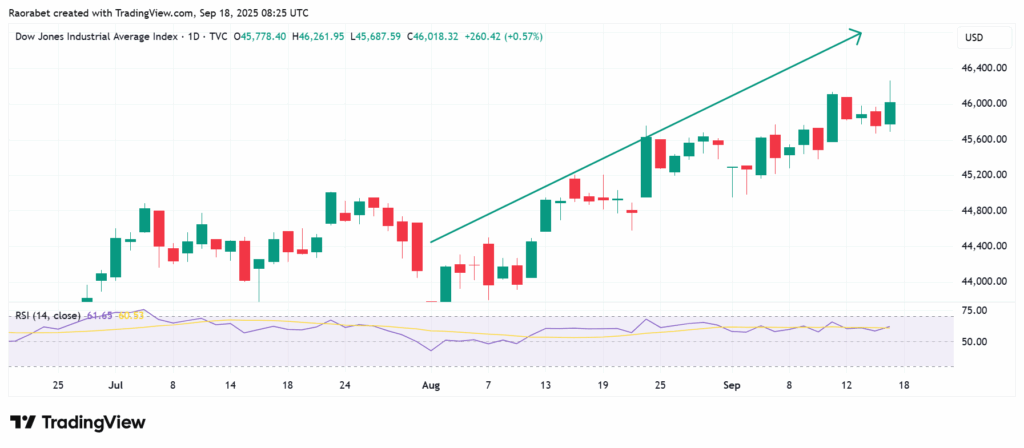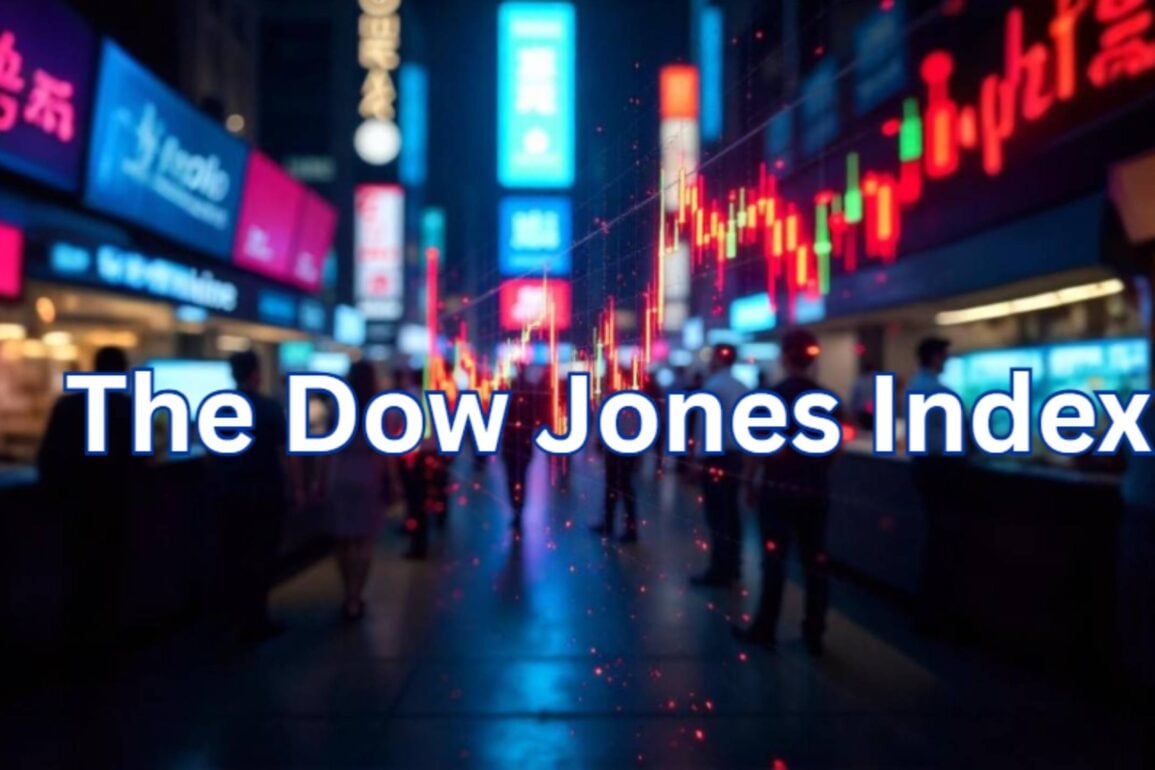- The US economy has stayed afloat in a high interest regime with the Dow Jones Index rising against the odd. Could a rate cut change things?
The Dow Jones Industrial Average (INDEXDJX: .DJI) has been rising sharply since August 2025. It rose by about 3.2% that month and was above 45,000 by early September. Amidst falling inflation and anticipation of Federal Reserve action, the blue-chip index has reflected broader market optimism. It has risen from a low of approximately 43,782 at the start of August to highs near 45,591 by the end of the month.

The Dow Jones Index has risen steadily since the beginning of August and the RSI at 61 favours further gains. Daily chart from TradingView
What the Fed Interest Rate Cut Means for the Dow
The Federal Reserve’s recent move to lower interest rates adds a new factor to this equation that might have a substantial and complex effect on the future of the Dow. A rate cut is usually seen as a good thing for the stock market. However, the current state of the economy comes with its own set of risks that could make it harder for the Dow to stay on the ascending trajectory.
The Federal Open Market Committee (FOMC) cut interest rates for the first time this year on September 17, 2025. FOMC members voted to lower the rate by 25 basis points, bringing it down to a target range of 4% to 4.25%. There is widespread expectation that this quarter-point cut, the first since December 2024, could mark the beginning of a cycle of relaxation.
The drop is likely to give the Dow a boost, especially in the near-term. Lower rates make it cheaper for businesses to borrow money, which increases investor confidence and reduces risk aversion. Lower debt equals more money for growth, share buybacks, and dividend payments, all of which are good for stock values.
However, the current scenario is not simple. The Dow’s steady rise since August has already taken into account a significant portion of rate cut optimism. Given the market’s high level of anticipation, a less dovish statement or fewer cuts than anticipated by the Fed may have caused a significantly negative reaction.
What Are the Risks?
Even though investors celebrated the Fed’s decision to lower rates, there are still some things to worry about. According to Fed Chair Jerome Powell, the rate cut was a “risk-management cut” to help keep inflation at the 2% target while keeping jobs stable in the face of weak labor data.
A “shift in the balance of risks,” according to the Fed’s statement, has occurred, with upward pressures from supply-chain bottlenecks and rising wages surpassing productivity. Therefore, if the latest cut turns out to be premature, higher prices could compel a policy reversal.
If the job market continues to underperform, it could also be an indicator that the economy is struggling. A rate cut might not be enough to stop a further downturn, and if corporate profits start to fall short of forecasts, the Dow’s current value could be considered as unsustainable, which would cause a big drop.
There are additional concerns about overvaluation: The Dow Jones Index’x price-to-earnings ratio is about 22, thanks to the AI hype and the strong post-pandemic comeback. A rise caused by a rate cut could make bubbles bigger in stocks that are already potentially overvalued.
Furthermore, external shocks also pose an underlying challenge. Industries like energy and military that are vulnerable to fluctuations in the Dow might be affected hard if trade tensions escalate under the Trump administration or if conflicts in the Middle East flare up again.
In Summary
Overall, the Fed’s rate cut in September is a boost for the Dow’s momentum, and the upside will likely continue because of lower borrowing costs and support for growth. However, the market had already priced in most of the positive news around the cut. Therefore, the coming economic data will determine if the Index maintains its success. The risks are high: the economy could still struggle even with the stimulus, inflation could stay high, and the Fed could reverse its easing policy of the September cut proves premature.
A drop in interest rates usually favours the Dow because it lowers the cost of borrowing, which encourages businesses to invest and consumers to spend more. These factors can contribute to better earnings for businesses.
All things held constant, the Dow might keep rising under current market conditions, thanks to lower interest rates and easing trade tariff worries.
A key risk is that the rate cut may signal a weaker economic growth. Also, inflation could go up, and the market might already be pricing in a rise.
This article was originally published on InvestingCube.com. Republishing without permission is prohibited.


